Benefits Of Intermittent Fasting
 I love to discuss a variety of different ideas on fitness in the blogs. Some I agree with, some I don’t, but explain why and some are interesting concepts that make me stop and think. Intermittent fasting is on the cusp of agreement and interesting for a variety of reasons AND depending how it’s done. Some people do water fasts for days, stating it cleanses their bodies and helps them get back to metabolic normal. Others simply eat all their meals in a eight hour window, ending early one evening and starting later the next day. For instance, the final meal for the day might be at 5 o’clock on Wednesday and the next meal is at 9 am on Thursday. They haven’t really missed a meal, but did actually fast for 16 hours.
I love to discuss a variety of different ideas on fitness in the blogs. Some I agree with, some I don’t, but explain why and some are interesting concepts that make me stop and think. Intermittent fasting is on the cusp of agreement and interesting for a variety of reasons AND depending how it’s done. Some people do water fasts for days, stating it cleanses their bodies and helps them get back to metabolic normal. Others simply eat all their meals in a eight hour window, ending early one evening and starting later the next day. For instance, the final meal for the day might be at 5 o’clock on Wednesday and the next meal is at 9 am on Thursday. They haven’t really missed a meal, but did actually fast for 16 hours.
There are other more restrictive types of intermittent fasting.
While I rather like the 16/8 fast there are a number of ways to fast. Aside from the water fast, which can last for days, particularly at supervised medical facilities, most of the other fasts aren’t really total fasts but modified eating plans. These plans require you to eat smaller, super low calorie meals on one day or two with normal eating on the other days. The Warrior fast allows you to eat a light amount during the day, like a piece of fruit or two and a huge meal in the evening. I understand why some of the concepts aid weight loss, but seriously, like the 16/8 fast the most.
Intermittent fasting can cause healthy changes in your body.
Insulin levels in your blood drop when you’re fasting. That can increase the amount of fat your body will burn. When you fast, even for a short a period as 16 hours, your body starts repairing itself at the cellular level and removing cellular waste material. Gene’s for longevity change beneficially and the amount of HGH—human growth hormone—increase in the blood. The higher the levels of HGH, the more potential for fat burning and muscle building.
Chronic diseases can potentially be reduced.
Oxidative stress and inflammation are often one of the causes of chronic disease and definitely adds to the aging of the body. A number of studies not only show that intermittent fasting can be a proponent for your body, helping to reduce inflammation, while also improving the body’s resistance to potential oxidative stress. You’ll look and feel better longer. One researcher hypothesized that perhaps the benefits came from the stress put on the cells, which in turn caused them to adapt and enhance their ability to cope with stress. That’s similar to what happens when you exercise.
- Intermittent fasting often works to help people shed unwanted pounds. It often occurs because they simply don’t have time to eat as much as they normally would.
- Intermittent fasting has proven effective to boost your memory. Fasting creates ketones, those help protect memory and improve learning, while also slow brain diseases.
- While most studies have been on rats, rather than humans, research shows that short term fasts could help slow the development of Alzheimer’s. Human studies show that short-term fasts often reduced the Alzheimer’s symptoms significantly in 90 percent of the cases.
- Rat studies showed that intermittent fasting actually extended the lifespan of rats. Rats who fasted on alternate days lived 83 percent longer than those eating normal meals each day.


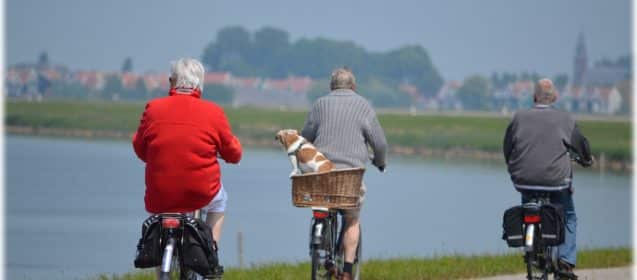
 I’ve recently heard one of my clients talk about their aunt, touting how mentally sharp she was for her age. It seemed to assume that the older you get, the more you “dumb down.” While you might think it’s true, it’s not the number of years you live that determine your mental sharpness or a guarantee that senility is part of the aging process. Even though genetics also plays an important role, it’s the lifestyle you live that makes a difference whether you’re mentally viable in your senior years. Here are some natural ways to fight mental aging.
I’ve recently heard one of my clients talk about their aunt, touting how mentally sharp she was for her age. It seemed to assume that the older you get, the more you “dumb down.” While you might think it’s true, it’s not the number of years you live that determine your mental sharpness or a guarantee that senility is part of the aging process. Even though genetics also plays an important role, it’s the lifestyle you live that makes a difference whether you’re mentally viable in your senior years. Here are some natural ways to fight mental aging.
 There’s a lot of talk about the dangers of taking too many NSAIDs. NSAIDs—nonsteroidal anti-inflammatory drugs—include a long list of drugs, but the best known are probably aspirin, ibuprofen, celecoxib, naproxen and oxaprozin, although there are several more. While the link to stomach problems and Reyes syndrome has been quite publicized, there are other conditions that they can exacerbate. Increased risk of heart failure and increased risk of renal failure are two reasons to limit the use of these drugs and the potential for an allergic reaction is the third.
There’s a lot of talk about the dangers of taking too many NSAIDs. NSAIDs—nonsteroidal anti-inflammatory drugs—include a long list of drugs, but the best known are probably aspirin, ibuprofen, celecoxib, naproxen and oxaprozin, although there are several more. While the link to stomach problems and Reyes syndrome has been quite publicized, there are other conditions that they can exacerbate. Increased risk of heart failure and increased risk of renal failure are two reasons to limit the use of these drugs and the potential for an allergic reaction is the third.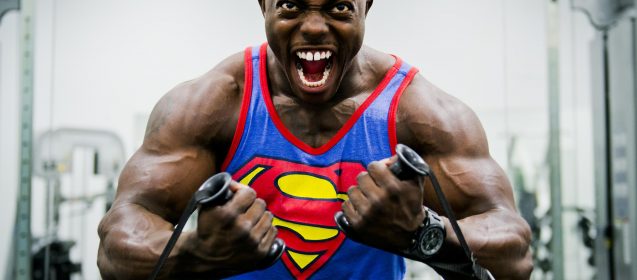
 I always say that anytime you can exercise is a good time, there are still some exceptions to the rule. Sometimes, people live a sedentary life five days a week and then become the GI Joe of the gym on the weekends. If you find your weekly schedule too crowded for exercise and spend your weekend focused on getting healthier and fitter, you need to be aware of the dangers of being a gym weekend warrior. Exercising is important, no matter when you do it, but you must watch out for these pitfalls.
I always say that anytime you can exercise is a good time, there are still some exceptions to the rule. Sometimes, people live a sedentary life five days a week and then become the GI Joe of the gym on the weekends. If you find your weekly schedule too crowded for exercise and spend your weekend focused on getting healthier and fitter, you need to be aware of the dangers of being a gym weekend warrior. Exercising is important, no matter when you do it, but you must watch out for these pitfalls.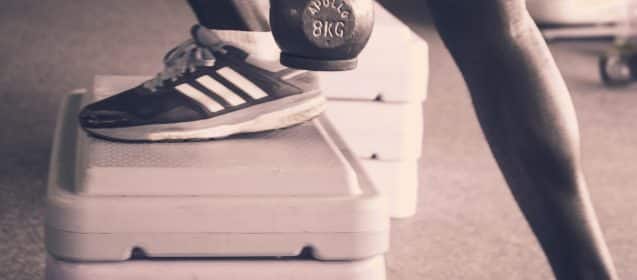
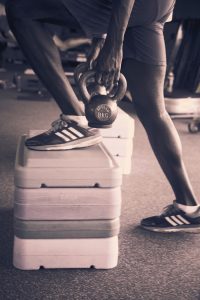 You don’t have to be a body builder or want to compete in weight lifting to get benefits from strength training. Everyone should be doing strength training. It should be part of every workout no matter what your goal. Strength training provides many different benefits, besides building muscle strength. It’s great for weight loss, not only burning huge amounts of calories, but also retaining the muscles you already have. The more muscle mass you have, the easier it is to lose weight, since muscle tissue requires more calories than fat tissue does. Strength training also continues to boost your metabolism even after you quit exercising.
You don’t have to be a body builder or want to compete in weight lifting to get benefits from strength training. Everyone should be doing strength training. It should be part of every workout no matter what your goal. Strength training provides many different benefits, besides building muscle strength. It’s great for weight loss, not only burning huge amounts of calories, but also retaining the muscles you already have. The more muscle mass you have, the easier it is to lose weight, since muscle tissue requires more calories than fat tissue does. Strength training also continues to boost your metabolism even after you quit exercising.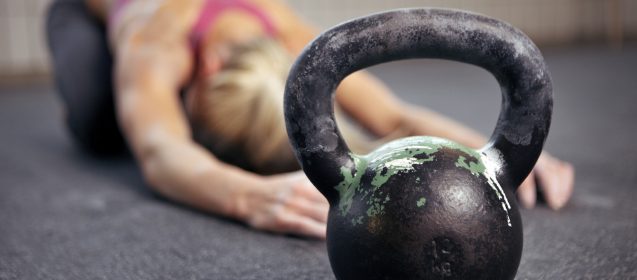
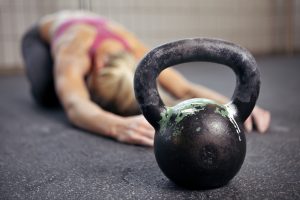 If you’ve ever worked out with kettlebells, you probably already know that one of the benefits from working out with kettlebells is a total body workout. It also helps improve fitness in all areas, strength, endurance, flexibility and balance. It’s the perfect functional fitness workout that can get results in a far shorter period of time.
If you’ve ever worked out with kettlebells, you probably already know that one of the benefits from working out with kettlebells is a total body workout. It also helps improve fitness in all areas, strength, endurance, flexibility and balance. It’s the perfect functional fitness workout that can get results in a far shorter period of time.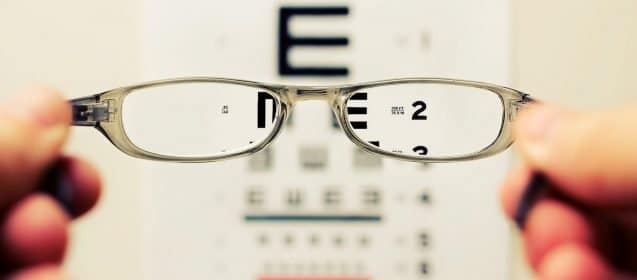
 There’s a lot of discussion and disagreement about the beneficial effects of exercise on your vision. Even though the jury is still out about whether it has a direct effect on near and far sightedness. Some say exercising, other than those for the eye itself, has no effect on your vision when it comes to near and far sightedness. Some other studies show it can boost vision and reduce the chance of serious eye conditions, such as macular degeneration and glaucoma, since it improves blood flow to the eye, lowers intraocular pressure and protects the ganglion cells in the retina. Some studies show that just 20 minutes of moderate exercise four times every week may reduce vision problems and improve blood flow to the optic nerve and retina.
There’s a lot of discussion and disagreement about the beneficial effects of exercise on your vision. Even though the jury is still out about whether it has a direct effect on near and far sightedness. Some say exercising, other than those for the eye itself, has no effect on your vision when it comes to near and far sightedness. Some other studies show it can boost vision and reduce the chance of serious eye conditions, such as macular degeneration and glaucoma, since it improves blood flow to the eye, lowers intraocular pressure and protects the ganglion cells in the retina. Some studies show that just 20 minutes of moderate exercise four times every week may reduce vision problems and improve blood flow to the optic nerve and retina.
 Unusual but amazing workouts can renew your interest in working out and help you get into shape while having a blast. Imagine walking your dog, while cross country skiing at the same time. It’s called Skijoring and there’s even races. While the dog does some of the work, having a harness and straps to pull you, it’s still a great workout and can be fun for both you and Rover. Dogs need exercise, too and it’s a great bonding experience. In the summer, you can do doga, which is doing yoga with the dog.
Unusual but amazing workouts can renew your interest in working out and help you get into shape while having a blast. Imagine walking your dog, while cross country skiing at the same time. It’s called Skijoring and there’s even races. While the dog does some of the work, having a harness and straps to pull you, it’s still a great workout and can be fun for both you and Rover. Dogs need exercise, too and it’s a great bonding experience. In the summer, you can do doga, which is doing yoga with the dog.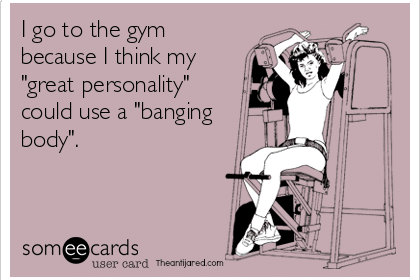
 The biggest cause of fitness program failure is quitting it before success was achieved. You need to identify how to stay motivated, once you’ve created your goals and the plan to achieve them. As a trainer, I find that most people want instant results and after the first few weeks, their enthusiasm and desire seem to wane. For some, it can even happen after the first few sessions. That’s why I also work on motivation. Some people find that knowing that someone is holding them accountable keeps them coming to the gym.
The biggest cause of fitness program failure is quitting it before success was achieved. You need to identify how to stay motivated, once you’ve created your goals and the plan to achieve them. As a trainer, I find that most people want instant results and after the first few weeks, their enthusiasm and desire seem to wane. For some, it can even happen after the first few sessions. That’s why I also work on motivation. Some people find that knowing that someone is holding them accountable keeps them coming to the gym.